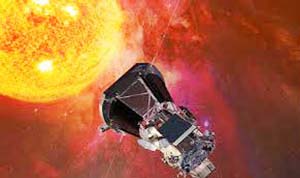
AFP, Tampa :
NASA is poised to launch a $1.5 billion spacecraft on a brutally hot journey toward the Sun, offering scientists the closest-ever view of our strange and mysterious star.
After the Parker Solar Probe blasts off from Cape Canaveral, Florida on August 11, it will become the first spacecraft ever to fly through the Sun’s scorching atmosphere, known as the corona.
Understanding how the corona works will help scientists anticipate dangerous space weather storms, which can disrupt the power grid on Earth.
“It’s of fundamental importance for us to be able to predict space weather much the way we predict weather on Earth,” explained Alex Young, a solar scientist at NASA.
The corona is a “very strange, unfamiliar environment for us.”
The unmanned probe is named after Eugene Parker, the 91-year-old pioneering solar astrophysicist, and the US space agency has coined it as the first mission to “touch the Sun.”
It will actually skim by at a distance of 3.83 million miles (6.16 million kilometers) above the Sun’s surface.
Mission managers say that may sound like a lot but is really quite a close shave, given the sweltering conditions out there.
The Sun-facing side of the probe will endure temperatures of about 2,500 degrees Fahrenheit (1,370 Celsius).
The spacecraft is protected by a heat shield that will keep it closer to room temperature, about 85 degrees Fahrenheit.
NASA is poised to launch a $1.5 billion spacecraft on a brutally hot journey toward the Sun, offering scientists the closest-ever view of our strange and mysterious star.
After the Parker Solar Probe blasts off from Cape Canaveral, Florida on August 11, it will become the first spacecraft ever to fly through the Sun’s scorching atmosphere, known as the corona.
Understanding how the corona works will help scientists anticipate dangerous space weather storms, which can disrupt the power grid on Earth.
“It’s of fundamental importance for us to be able to predict space weather much the way we predict weather on Earth,” explained Alex Young, a solar scientist at NASA.
The corona is a “very strange, unfamiliar environment for us.”
The unmanned probe is named after Eugene Parker, the 91-year-old pioneering solar astrophysicist, and the US space agency has coined it as the first mission to “touch the Sun.”
It will actually skim by at a distance of 3.83 million miles (6.16 million kilometers) above the Sun’s surface.
Mission managers say that may sound like a lot but is really quite a close shave, given the sweltering conditions out there.
The Sun-facing side of the probe will endure temperatures of about 2,500 degrees Fahrenheit (1,370 Celsius).
The spacecraft is protected by a heat shield that will keep it closer to room temperature, about 85 degrees Fahrenheit.

